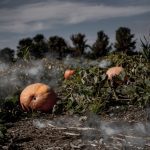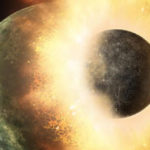 Miscellaneous
Miscellaneous  Miscellaneous
Miscellaneous  History
History 10 Huge Historical Events That Happened on Christmas Eve
 Music
Music 10 Surprising Origin Stories of Your Favorite Holiday Songs
 History
History 10 Less Than Jolly Events That Occurred on December 25
 Weird Stuff
Weird Stuff 10 Funny Ways That Researchers Overthink Christmas
 Politics
Politics 10 Political Scandals That Sent Crowds Into the Streets
 Weird Stuff
Weird Stuff Ten Bizarre Facts About The Doge Meme
 Our World
Our World 10 Ways Your Christmas Tree Is More Lit Than You Think
 Movies and TV
Movies and TV The 10 Coolest Stars to Set Sail on The Love Boat
 History
History 10 Things You Didn’t Know About the American National Anthem
 Miscellaneous
Miscellaneous Top 10 Things Crypto Was Supposed to Change & What Actually Did
 History
History 10 Huge Historical Events That Happened on Christmas Eve
 Music
Music 10 Surprising Origin Stories of Your Favorite Holiday Songs
Who's Behind Listverse?

Jamie Frater
Head Editor
Jamie founded Listverse due to an insatiable desire to share fascinating, obscure, and bizarre facts. He has been a guest speaker on numerous national radio and television stations and is a five time published author.
More About Us History
History 10 Less Than Jolly Events That Occurred on December 25
 Weird Stuff
Weird Stuff 10 Funny Ways That Researchers Overthink Christmas
 Politics
Politics 10 Political Scandals That Sent Crowds Into the Streets
 Weird Stuff
Weird Stuff Ten Bizarre Facts About The Doge Meme
 Our World
Our World 10 Ways Your Christmas Tree Is More Lit Than You Think
 Movies and TV
Movies and TV The 10 Coolest Stars to Set Sail on The Love Boat
 History
History 10 Things You Didn’t Know About the American National Anthem
10 Funky Facts about the Great Pacific Garbage Patch
The Great Pacific Garbage Patch (GPGP) is a massive collection of marine debris that is floating out and about in the middle of the Pacific Ocean. It is located roughly halfway between Hawaii and California, with its location the result of a variety of ocean currents that have converged to meet there. It’s a ton of detritus of various kinds—trash thrown from ships, trash left on beaches, and trash that has washed out of rivers and flown into the ocean. Over time, all that trash has ridden the ocean currents to this same spot, and the GPGP was created.’
In total, scientists estimate that there are about 1.8 trillion pieces of plastic and other trash that make up the GPGP. Much of the massive island-like floating patch is made up of bottles, containers, and fishing nets. There are also a variety of microplastics that make up part of the debris field, too. Obviously, it’s gross. And obviously, it’s a massive environmental hazard. And in this list today, we’ll take a look at ten disturbing, smelly, and unsettling facts about it! Here is everything you ever needed to know—and then some—about the infamous Great Pacific Garbage Patch.
Related: 10 Surprising Uses Scientists Have Found for Plastic Waste
10 It’s All in the Current
You may be wondering to yourself how the GPGP can possibly stay in (mostly) one place despite being in an ever-moving and always-waving ocean. That’s because the ocean currents that converge on the area in the Pacific Ocean are precise and exact. In the case of the GPGP, several currents—most notably one called the North Pacific Gyre—are critical in accumulating and then trapping all of the debris in the massive field.
In the middle of the North Pacific Gyre, the water is mostly very calm and stable. Because multiple currents come from different areas and meet at that point, there isn’t as much water movement in the middle as you might think of with the rest of the ocean. Instead, it simply traps and holds small debris within the field forever after.
Take a plastic water bottle discarded off the coast of California, for example. That bottle will most likely ride the California current south to Mexico. From there, it’ll latch onto the North Equatorial Current, which tends to sweep bottles and other items across the Pacific Ocean. The bottle may go as far as Japan on its own, where it is captured in the very powerful Kuroshiro Current.
That wave then spits the bottle eastward again, where it typically latches onto the North Pacific Current. From there, the bottle is funneled without fail into the GPGP in the middle of the North Pacific Ocean. And that cycle happens again, and again, and again for countless pieces of other trash and debris, too.[1]
9 A Soup of Crap
The GPGP may be a massive patch of trash and debris, but it’s not an island. You couldn’t walk around on it or anything—unless, we suppose, you found one really big piece of plastic trash that would support your weight. But despite the name of this patch, it’s not actually a landmass of any kind. It’s more of a massive trash soup or a stew of plastics and netting and bottles and the like.
Coming up on it in a boat doesn’t give you the view of a hill of trash or a mound of debris, like what you might find at a landfill. Instead, it’s more of a soupy mixture of trash particles floating all across a very large area. Think of it more as a debris field than a pile of debris.
Even though it’s a truly massive area filled with floating trash, the GPGP can’t be picked up on satellite imagery. There is often some watery space between little bits of trash, with the current merely bringing all the pieces together but not sticking them as one unit. And there’s more to be concerned about that you can’t see, too: microplastics.
The GPGP is made up in large part of tiny, often unseen microplastics. These small particles are not typically seen by the naked eye, but they are often more damaging to the environment than bottles and related items. There are billions upon billions of them, and they often get ingested into the human body via food and water intake. Gross![2]
8 Miserable Marine Life
The GPGP is an unsettling spot for many reasons, but one of the most notable is the effect it has on marine life. Marine animals, including birds, fish, turtles, and even dolphins and other larger swimming creatures, are attracted to the scents and sights of the GPGP. Unfortunately, once they get there, many of them peck and nibble and bite on what they think are bits and pieces of food.
Invariably, many of these animals end up ingesting small (and sometimes larger) bits of plastic. The plastic, in turn, works slowly in their bodies to kill them. It creates an indigestible mass in their stomachs, which in turn leads to major digestive problems, other health issues, and eventual starvation to the point of death.
Depressing, right? Interestingly, scientists found as early as 1966 that wildlife in marine areas was ingesting plastic at shockingly high rates. That year, researchers discovered that a series of dead Laysan albatross chicks had plastic container lids in their stomachs. And while that finding was both groundbreaking and unsettling at the time, it was made about two decades before the GPGP was first discovered.
So the oceanic garbage patch alone is not to blame. Still, biologists rightly recognize that the GPGP’s sheer size and attractiveness to marine wildlife make it ground zero for environmental issues in the Pacific Ocean. And with it growing larger year by year, things will only ever get worse in that region of the sea.[3]
7 Daunting Debris Field
As we covered up top, the GPGP consists of roughly 1.8 trillion pieces of trash. How scientists took the time to count all that, and what methods they used for deducing roughly how much trash is inside the GPGP, we’ll never know. That’s a lot of zeroes! But what we do know is how big the actual debris field is—and we know exactly how scientists determined its estimated size even despite the fact that it moves around a bit in the ocean!
According to the experts, the GPGP covers a surface area of an astonishing 618,000 square miles (1.6 million square kilometers). For those of you who need a reference as to how big that is, let’s try this one: It is larger than twice the size of Texas or roughly three times the size of France. Imagine three Frances just sitting out there in the ocean, and it’s all just floating trash. Got that image in your head? Well, good, because that’s what the GPGP is right now.
As for figuring out that surface area, as we noted above, satellite imagery couldn’t offer much help. Instead, biologists and environmental researchers got together a fleet of nearly three dozen boats and hundreds of surface nets to “round up” the trash in an attempt to get some kind of handle on the mass’s size. Then, they had a flight crew do a few flying passes over the trash soup, too, just to be sure they knew exactly where to cover with their search.
In the end, they came up with that large number. It’s inexact, of course, since trash is constantly added to the pile, and the currents move things around a bit. But though it may be ameboid in its day-to-day existence, that’s roughly how big the GPGP is as far as science is concerned.[4]
6 There Are Others…
While the GPGP is the biggest trash problem in the world right now, it’s not the only one. In fact, there are several other marine garbage patches dotted in oceans all around the world. Thankfully, the rest of the currently existing ones aren’t nearly as big as the GPGP.
However, the very fact that they exist—and scientists have found evidence that they are all growing, as is the GPGP—means that the world has a very real trash problem on its hands. And with patches popping up in nearly every ocean where there are currents that converge into gyres, that means a solution must come quickly.
Major trash vortexes exist in both the Atlantic and Indian Oceans, for one. Gyres there lead currents into dead zones where trash accumulates quickly. Plus, heavily trafficked shipping lines have effectively funneled trash into certain oceanic locations elsewhere in the world. The North Atlantic has one of the most concerning and fast-growing garbage patches.
Amazingly, the relatively tiny little North Sea is even developing its own garbage patch, too. Heck, the biggest other garbage patch in the world is also in the Pacific Ocean! The Western Garbage Patch isn’t as large as the GPGP, but it’s significant. It is found on the other side of the Pacific Ocean, roughly halfway between Hawaii and Japan.[5]
5 The Shocking Sheer Scale
Humans produce about 400 million metric tons of plastic every year. For reference, that is about the weight of every single human on the planet. In plastic. Every single year. And that scale only ever seems to keep growing as we consume more things that are packaged and shipped in plastic each and every year.
The thing is, though, that we do a pretty good job of recycling and/or properly disposing of most of that plastic. Of those 400 million metric tons of junk, only about 0.5%—or roughly 2 million metric tons, give or take—ends up in the ocean in a place it definitely shouldn’t be. Of course, 2 million metric tons is still an insane amount of plastic to have just floating around in our oceans. So let’s not pat ourselves on the back too hard when it comes to plastic waste.
As for the cause of plastics floating into the ocean, the main culprits actually seem to be middle-income nations with rivers leading out to coastal waterways—think areas like Central and South America and even some coastal sections of Africa and the like. That’s because, for the most part, these developing nations don’t have the same robust plastic recycling plants and infrastructure built out for their communities and residents as you see in the United States, Europe, or East Asia.
When plastic waste piles up in some of these developing nations, it can clog rivers and then be whisked out into the ocean, where it eventually falls into a current and is pulled into the massive gyre that leads to the GPGP and other garbage patches.[6]
4 Fishing and Shipping Hurt, Too
We’ve spent much of this list talking about how the GPGP grows because of land-based plastic waste that is sent out to sea and slowly accumulates in the gyre based on ocean currents. And while that is true of much of the garbage patch’s contents, that’s not the whole story here. There is an entire second narrative to consider, too.
In fact, quite a bit of trash is produced by humans populating vessels that are traveling far out at sea, hundreds or thousands of miles away from the shore. We don’t often think of this trash simply because we see the sea as this vast, wide-open space that barely has anybody in it at any one time. And that’s kind of true, relative to its size, but the fact is that the ocean has quite a few boats, ships, and other vessels constantly moving about—and making trash.
While land-based trash can take months or years to float out to sea, catch a current, and be pulled into the GPGP, trash strewn from ships out on the ocean can get there very quickly. And sadly, both major shipping line vessels and fishing boats of all sizes and ports are complicit in creating trash. Littering has become a massive problem in the ocean, with sailors on large vessels opting to sometimes dump large amounts of trash in the water simply to get rid of it.
That, along with other moves of improper waste disposal, very often creates pools of trash that quickly pick up a current out on the high seas and are drawn into the GPGP. With no oversight commission on hand in person to watch these illegal dumpings happen, it is impossible to track or even begin to remedy these trash accumulations without significant changes to how shipping and commercial fishing are done.[7]
3 An Accidental Discovery
Long Beach native and longtime sailor Charles Moore is the one credited with first discovering the GPGP when he came upon it completely by accident in 1997. Scientists had already been wondering how plastic waste might damage marine ecosystems. Still, until fate intervened and flung Captain Moore into the center of it all, nobody had any idea that there was a massive, hulking area of garbage out in the Pacific Ocean.
Moore himself was a longtime sailor who had grown up enjoying the pastime with his father. As he aged, Moore began to take more sailing trips to various parts of the world, including his favorite route of them all: between Hawaii and California.
But one day in 1997, hurricane winds blew his sailing vessel way off course. He’d been intending to travel from Honolulu to Santa Barbara, California. Unfortunately for him, the course correction delayed his journey home. Then, he began to notice something amiss in the water: tons and tons and tons of floating debris abruptly appearing around his ship.
After hours of spotting more and more trash, Moore realized something was very seriously wrong. “I said, you know what, this has got to be more than just Hansel and Gretel leaving a trail of crumbs just for me to follow home,” Moore recalled years later when asked about his unlikely discovery of the GPGP. “This is not what it is. This is gotta be a bigger phenomenon.” Indeed, it was.[8]
2 New Ecosystems Take Hold
While the GPGP is both an eyesore and a major threat to the environment, its existence has actually allowed some very specific ecosystems to thrive. Specifically, coast-based creatures like certain crabs and anemones have been found by scientists to live and do fairly well on the outskirts of the trash heap.
They are thousands of miles from their original homes on beaches across the North Pacific Ocean, but the trash heap has amazingly been a reliable second home for many different creatures. One study found that there are dozens and dozens of species of invertebrate organisms and other tiny sea creatures that live within the plastic garbage pile. And scientists have reason to believe that those animals have been there for years!
Essentially, the matter and debris that has floated out to sea along with the garbage pile has re-created a coastal ecosystem. It’s obviously not natural or healthy for the rest of us—or for the vast majority of sea creatures—but for some invertebrates, it works. Species that wouldn’t normally survive in the open ocean, like crabs and anemones, are now thriving within the garbage pile.
There is enough organic matter—and goodness knows the trash heap itself is big enough—that these creatures can even thrive and multiply in time. “It was surprising to see how frequent the coastal species were,” one researcher told CNN after discovering the unexpected life that has bubbled up within the trash. “They were on 70% of the debris that we found.” How does that Jeff Goldblum quote go again? Something like, “Life, uh, finds a way,” right? Well, here’s (literally) living proof of that in action![9]
1 A Clean-Up Solution?
While the GPGP may be a crazy and unsettling situation going on out in the middle of the ocean, we aren’t powerless to stop it. Barges and trawlers have been tasked with cleaning up the garbage patch en masse since September 2018.
Early that month, the first set of collection barges was dispatched to the gyre to begin picking up trash. Called “Ocean Cleanup System 001,” the initial trial ran for four months. It produced such good results that the team behind the cleanup idea decided to put “System 001/B” into use soon after that.
By 2021, the Ocean Cleanup system had collectively picked up about 63,000 pounds (27,670 kilograms) of trash from the GPGP. Most of it was plastic, with plenty of metal and other materials among the waste they collected out on the high seas. Then, by July 2022, a milestone: the Ocean Cleanup crew announced that they’d picked up about 220,000 pounds (more than 100,000 kilograms) of GPGP trash during their “System 002” phase of work.
By 2023, that system transitioned into “System 03,” which the crew claims is about ten times more effective than even the pickup work they’ve been doing to this point. That’s a massive improvement because, with ten times the efficiency of past cleanups, the crew now believes they can get ahead of the GPGP onslaught and pick up more trash at a faster rate than what is being deposited there every year.
“System 03” will begin running at its heaviest in early 2024, and the Ocean Cleanup crew believes they will be able to clean up the entire Great Pacific Garbage Patch by early 2034. Obviously, there will be a lot of variables thrown their way over the next ten years.
That goal may not prove completely realistic. But it’s clear that there are major (and very necessary) improvements ahead. Here’s hoping they clean up a LOT of trash at a very high rate![10]








